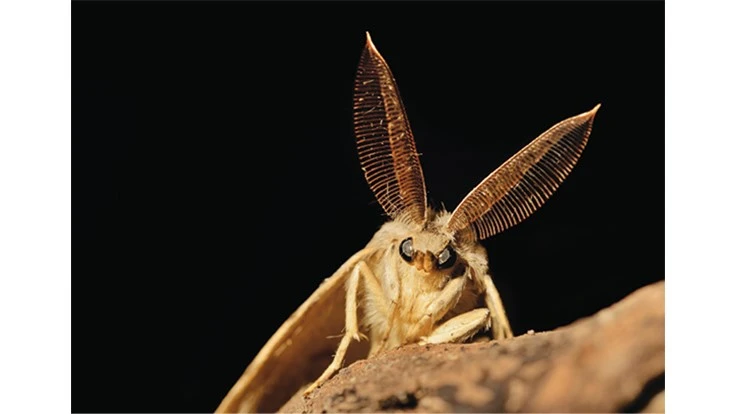
With much of the country coming out of a warmer and wetter winter, experts across the nation say it’s hard to anticipate how the weather will affect the insect pressures once the summer gets rolling. However, one thing’s for sure: Damaged or diseased turf means there’s an increased chance those spots are susceptible to pest problems this season.
“The best defense against any pest is going to be healthy, dense, well-managed turf,” says Becky Grubbs, an assistant professor and turfgrass specialist at Texas A&M University. “It can be a good time when you’re seeing pressure to check in with, ‘Am I irrigating appropriately? Am I mowing appropriately? Am I fertilizing appropriately?’”
Grubbs says most of the country faced “prolific” rainfall this winter, so cool-weather weeds and some diseases may have already emerged on lawns. North Carolina State University’s Rick Brandenburg, an extension turf specialist, says it’s still too early to decide what the major pest and insect pressures will exactly be.
Brandenburg says coastal states had a big problem with fall armyworms – which don’t overwinter – last year, so they’ll have to start at square one with those. He’s also already seen some fire ants and mole crickets on the edge of his own yard. But expecting those to remain the biggest problems is a fool’s game, Brandenburg says.
“It’s really hard to predict what that means. Every time I do, it seems like I’m wrong,” Brandenburg said. “There are so many factors that are into it. We talk about, ‘Are the pests going to be early this year? Are they going to be delayed? My experience as far as the timing of these pests, it has more to do with the month of April than it does January, February, because even if the temperatures are warmer, to a bug, they’re still cool.”

WHAT TO DO.
While it’s difficult to know what the biggest pressures of this summer will be, there are certain precautions available for combatting the year’s nastiest pests.
Richard Buckley is the director of the Plant Diagnostic Lab and Nematode Detection Service at Rutgers University, and he says his area of the country will likely be watching out for tent caterpillars, spotted lanternflies and gypsy moths.
But he recommends looking up historical data on properties to see what has overwintered in the past and watch for those warning signs, such as egg masses. The data should also show trends in what certain pest species come as a result of particular weather.
“The key is to be out there looking so you can monitor when they start, and if it’s earlier or later, you’ll know.” Richard Buckley, Rutgers University
“The key is to be out there looking so you can monitor when they start, and if it’s earlier or later, you’ll know,” Buckley says. “With insects, it’s all about surgical strike. You see them, you count them, you figure out what part of their life cycle is most vulnerable, and then you attack as necessary.”
Buckley also recommends talking with local experts and researchers, especially at the county level. Because it’s too early to know what pests will be most prevalent, he says finding local guidance is the best practice, whether they help you find solutions for particular pests or offer warning signs on insects to watch out for.
Brandenburg says that in theory, the warmer winter probably didn’t kill off insects like cold temperatures usually do. But if temperatures don’t heat up quickly in April and May, those populations might still be low entering June like they are now. Finding a local expert could help ease that uncertainty as the season wears on.
“It’s easy to say that since it’s been a warm winter, that you’ve had more pests overwintering but at the same time, you’ve had more of their natural enemies,” Brandenburg says. “Does that balance it out? When it’s warmer and wet, there are natural pathogens that attack insects. Those are all things that really are hard to answer, and sometimes there are subtle differences in a winter that we don’t pick up on that probably influence those situations.”

WHAT LIES AHEAD.
Brandenburg says there could be some biologicals on the way to help ward off insects, and for the first time in his career, the tests he’s running with these products are just as successful as tried-and-true chemicals.
He won’t say which products he’s tested as they’re still unreleased, but Brandenburg believes the increased societal and governmental pressure to avoid pesticide use will continue to lead to more alternatives. The race is on to find the most successful biologicals, Brandenburg says, and they’ll continue to become significant factors to consider moving forward.
“There may be a greater marketplace for them ever,” Brandenburg says. “It may make these products in greater demand than in the past. We’re finding they really can stand side-by-side with pesticides.”
Grubbs also says there may be some products out soon but the government shutdown earlier this year may have slowed the EPA approval process. The delay could take a few more months, extending well past this season. This should still allow LCOs ample time to look into the latest options for combatting pests. She recommends going to state turfgrass and nursery meetings to get updates on what’s going on the industry, and keeping regular contact with your state turfgrass specialists will help you stay in the know on what products are available.
“A lot of times, somebody like me or some of my peers in similar positions, we’re doing the trial work on the later end of those products being developed,” Grubbs says. “It allows us to have some familiarity with the products, how they perform, and what products are imminent to being released.”
As with anything else regarding insects, the experts think closely surveying the market – and your lawns – is the solution.
“It’s just keeping your eyes open,” Brandenburg says. “That’s about it.”

Explore the April 2019 Issue
Check out more from this issue and find your next story to read.
Latest from Lawn & Landscape
- PERC helps debut propane direct-injection fuel system at ACT Expo 2025
- Retargeting Ads – A Secret Weapon for Growing Your Lawn Care Business
- Leading a growing company
- Project EverGreen launches Clean Air Calculator
- Rain Bird acquires smart lawn care company OtO from Toronto
- PBI-Gordon names Marvin as VP of research and development
- Mean Green rolls out Vanquish Autonomous mower
- Focal Pointe launches new podcast series






